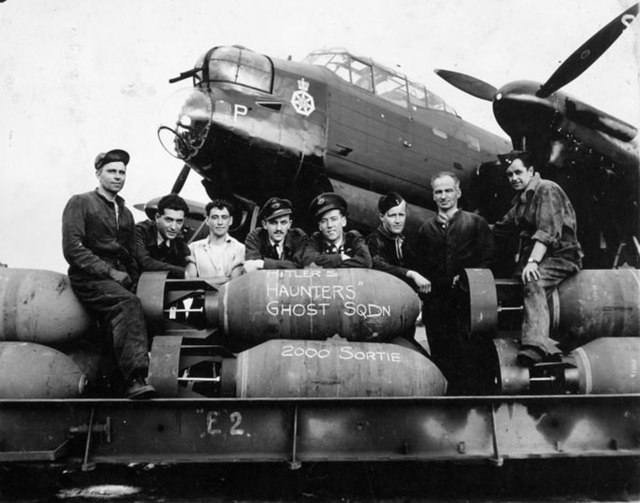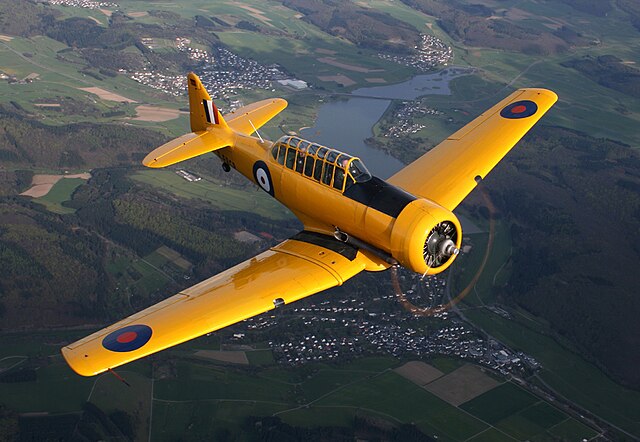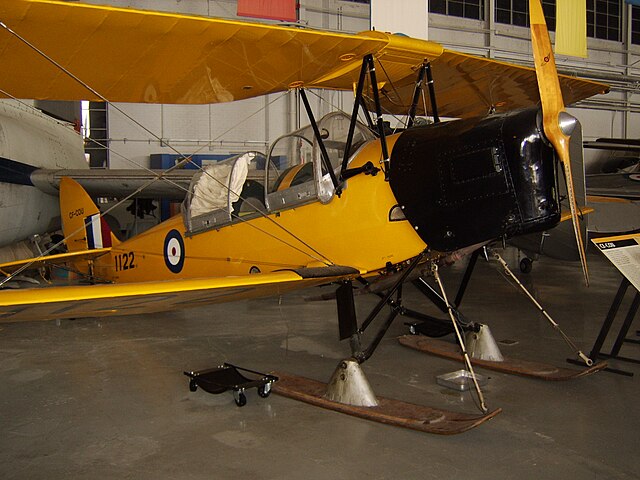Article XV squadrons were Australian, Canadian, and New Zealand air force squadrons formed from graduates of the British Commonwealth Air Training Plan (1939) during World War II.
A bomber crew from No. 462 Squadron RAAF in September 1942. While the squadron was officially a unit of the Royal Australian Air Force, only the man third from the right was Australian; the others are from Britain, Newfoundland and New Zealand
Aircrew and groundcrew of a No. 428 Squadron RCAF Lancaster bomber.
Hurricane night fighter pilots from No. 486 Squadron at RAF Wittering in 1942
British Commonwealth Air Training Plan
The British Commonwealth Air Training Plan (BCATP), often referred to as simply "The Plan", was a large-scale multinational military aircrew training program created by the United Kingdom, Canada, Australia and New Zealand during the Second World War. The BCATP remains one of the single largest aviation training programs in history and was responsible for training nearly half the pilots, navigators, bomb aimers, air gunners, wireless operators and flight engineers who served with the Royal Air Force (RAF), Royal Navy Fleet Air Arm (FAA), Royal Australian Air Force (RAAF), Royal Canadian Air Force (RCAF) and Royal New Zealand Air Force (RNZAF) during the war.
RCAF Harvard
de Havilland DH.82C Tiger Moth in British Commonwealth Air Training Plan "trainer yellow" at the Western Canada Aviation Museum (note the skis, and the enclosed cockpit common to Canadian-built Tiger Moths)
RCAF Harvards were used as a trainer aircraft by thousands of Commonwealth aviators from 1940 onwards. Harvard II from the BCATP Museum in Brandon, Manitoba, Canada.
RCAF Cessna Crane as employed in the BCATP on display at the Canadian Warplane Heritage Museum.







